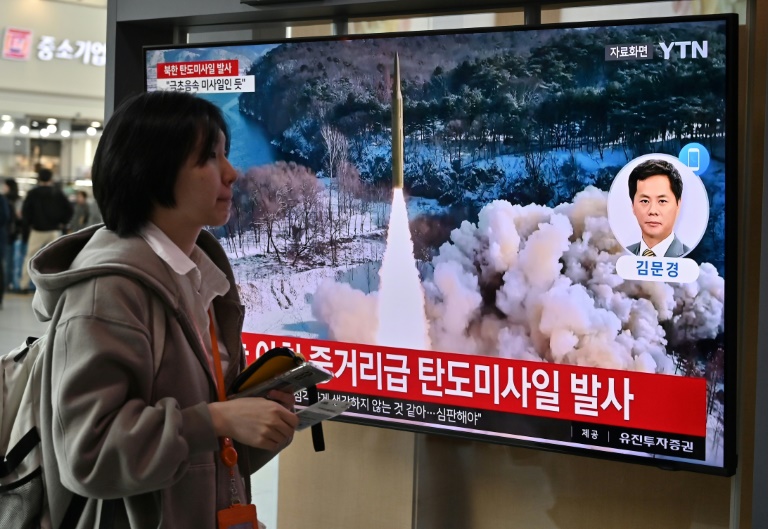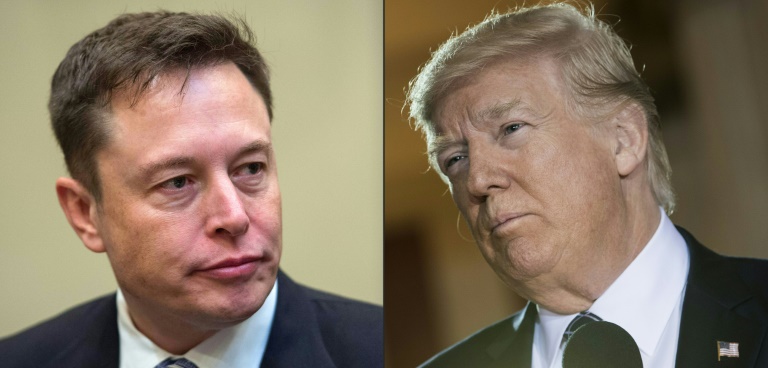North Korea fired a medium-range ballistic missile on Tuesday, Seoul’s military said, the latest in a spate of banned weapons tests by Kim Jong Un’s regime this year.
Tuesday’s launch was the third ballistic missile test of 2024, after a solid-fuel one overseen by Kim in March and another tipped with a manoeuvrable hypersonic warhead in January.
It also comes less than two weeks after Kim supervised an engine test for a “new-type intermediate-range hypersonic missile”, according to North Korean state media, which has also said said he oversaw “super large” rocket launcher drills and tank exercises this year.
Seoul’s military “detected around 06:53 (2153 GMT) what is presumed to be a medium-range ballistic missile fired from Pyongyang area into the East Sea,” the Joint Chiefs of Staff said, referring to the body of water also known as the Sea of Japan.
The missile flew about 600 kilometers (373 miles) before splashing down, the JCS said, adding it had “stepped up monitoring and are closely sharing relevant information with the US and Japan”.
“We strongly condemn the North’s blatant provocation that threatens peace and stability on the Korean peninsula,” it added.
Tokyo confirmed the missile launch, with its coastguard urging vessels to be vigilant and report any fallen objects without approaching them.
Japanese public broadcaster NHK, citing unnamed government sources, reported that the missile appeared “to have fallen in waters outside Japan’s exclusive economic zone”.
Japanese Prime Minister Fumio Kishida told reporters that the North had “repeatedly launched ballistic missiles” this year, adding that it was a threat to regional security and “absolutely unacceptable.”
The launch comes just days after a Russian veto at the United Nations ended UN expert monitoring of North Korean sanctions violations, amid a probe into alleged arms transfers between Moscow and Pyongyang.
North Korea has yet to comment on the development.
It also comes just over a week before South Korea votes in a general election, in which the party of hawkish President Yoon Suk Yeol, who has taken a tough line with Pyongyang, is seeking to win back control of the parliament.
“The Kim regime prioritises advancing its military capabilities and doesn’t care to stay quiet during the South Korean legislative election campaign,” said Leif-Eric Easley, a professor at Ewha University in Seoul.
“But firing an intermediate-range missile lacks the shock value of a full-range ICBM launch or a nuclear test, so it’s unlikely to swing any National Assembly seats.”
Pyongyang has been under a raft of sanctions since its second nuclear test in 2009, but the development of its nuclear and weapons programmes has continued unabated.
So far this year, the nuclear-armed North has declared South Korea its “principal enemy”, jettisoned agencies dedicated to reunification and outreach, and threatened war over “even 0.001 mm” of territorial infringement.
The Tuesday launch “appears to be part of Pyongyang’s missile development blueprint, including hypersonic weapons,” said Han Kwon-hee of the Korea Association of Defence Industry Studies.
It seems Kim is developing such technology domestically, rather than with Russian help “given the sensitive nature of the weapons”, he added.
Pyongyang has recently boosted ties with traditional ally Russia.
In September last year, Russian President Vladimir Putin and Kim held a summit in Russia’s far east, during which Kim declared that ties with Moscow were his country’s “number one priority”.
The United States subsequently claimed Pyongyang had begun providing Moscow with weapons.
South Korea asserted last month that North Korea had shipped around 7,000 containers of arms to Russia for its war with Ukraine since the transfers began around July — likely in exchange for Russian help with Kim’s satellite programmes.







